Rear View Safety Backup Camera System - Mirror Monitor - License Plate Mounted Camera

 Arrives before Christmas
Arrives before Christmas 

Thank you! Your comment has been submitted successfully. You should be able to view your question/comment here within a few days.
Error submitting comment. Please try again momentarily.
- All Info
- Reviews (14)
- Q & A (0)
- Videos (3)
- Photos
Rear View Safety Backup Camera - RVS-778718N
- Backup Camera Systems
- Hardwired
- Rearview Mirror Monitor
- 4.3 Inch Display
- Rear View Safety
- License Plate Camera System
- Replaces Existing Mirror
- Ultra-Wide View
- Rear View Safety backup camera system
- Mirror monitor
- Replaces existing rear view mirror
- Bright 4.3" color TFT LCD screen
- Mirror image capability
- Distance grid lines
- Power harness with 2 camera inputs
- Night vision backup camera
- License plate mounted
- 170-Degree viewing angle
- Compact design makes camera virtually invisible
- IP68 Rated - keeps out dirt and moisture
- Shock resistant with 10G vibration rating and 100G impact rating
- Includes all wires, connectors, and mounts
- 1-Year warranty
RVS-778718N Rear View Safety Backup Camera System - Replacement Mirror Display - License Plate Mounted Camera

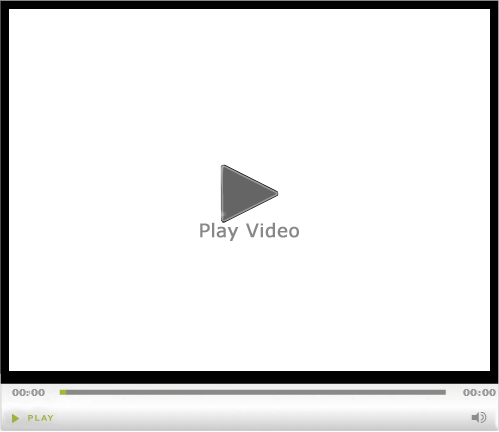
Videos are provided as a guide only. Refer to manufacturer installation instructions and specs for complete information.
Video Transcript for A Closer Look at the Rear View Safety Backup Camera System
Today we're going to be taking a look at the rear-view safety backup camera system. This backup camera system increases safety not only for the operator but also for the vehicle. The system is complete with the mirror monitor which replaces the existing rear-view mirror in the vehicle. The mirror is reflective that way it can function as a regular rear-view mirror. The system also features mirror image capability with distance grid-lines. It's going to come with your power harness with two camera inputs that allows you to add more than one camera.
The camera is on a license plate bracket. This is a 170-degree camera with night vision. It's going to come with all of the necessary wiring, connectors and mounts that you need for your installation and for your application. The system is completely weather-proof with a IP 68 rating. It's strong and reliable. It features a shock resistance with a 10G vibration rating.
The backup camera is a license plate mounted design and can fit virtually any vehicle. It's a nice, slick compact design that makes the camera barely noticeable. The camera bracket is made from a heavy duty metal construction and the angle of the camera is adjustable. That way you can get the best view for your application. A few specs to go over with the mirror monitor.
This is going to measure around 3 inches tall by 10-1/4 inches long. It's going to feature a bright 4.3 inch color TFT LCD screen. The image will show up when the reverse gear is engaged and the image shows up on the driver's side of the mirror. Wiring is easy. Everything is going to be labeled so all the connectors are labeled where they go and what they connect to, so that makes installation and getting all the wires connected very quick and easy. It's also going to come with some zip ties, as well as some brackets.
The zip ties are going to be great when it comes to securing any excess or slack, and the wiring you can make sure that's tucked up and out of the way and you can secure it to out of the way locations. It's going to come with a camera cable. This measures around 33 feet long that way you have plenty of wiring for your vehicle, no matter what the length is up to 33 feet. It's also going to come with some additional mounting hardware, and it's going to come with a remote control. That's going to do it for today's look at the rear-view safety backup camera system. .
Customer Satisfaction Score:
91% were satisfied with this product
9% of customers were not satisfied
- Arrived Damaged
- Wrong item was ordered
- Did not arrive in time
Ratings & Reviews
4.7
14 reviews
THE ITEM WAS CORRECT AND IS EXACTLY WHAT MY CUSTOMER WANTED

Outstanding parts knowledge and a high quality products!
This was to be a replacement for the existing RVS-770619N.So far i am not able to connect the unit. Cable coming from the old cameras use a 5 pin connector. The new system uses a 4 pin connector. I trying to find a adapter. Did not receive a remote control in the box.

Installed in a 2013 F150 with no backup warning system.
Had the camera professionally installed. The video cable was too long but the mechanic rolled the excess up and zip tied it in the engine compartment so no issues there. Camera/rear view works great. Menu system and camera adjustment was easy to do. The three color backup grid lines are excellent. Works well in bright sun and quite well in the dark with the backup lights. Very much like the split-screen function so I can glance back and forth between the camera and normal mirror. Typically it is sometimes blurry when the road is wet but that is understandable. I would absolutely purchase this product again and highly recommend it!
Great service on the phone

The camera is of high quality, as is the rearview mirror and monitor. I did have to return the first mirror because the bracket didn't match my 2013 Ram 1500's windshield mount, even though it was listed as a universal fit. The Ram has a triangular type fitting. I tapped into the reverse light wiring for power. l ended up having to replace the incandescent reverse light bulbs with LED bulbs because the monitor image flickered badly until I installed the LEDs. I think this was because the BCM (Body Control Module) got confused with the additional power draw. Since then the camera and monitor have worked flawlessly. It provides a great view behind the truck, even at night. Because of the placement on the bumper it doesn't have a good view of the hitch ball, but I don't tow very often. Overall I have been very pleased and feel that the camera is well worth the price.

My wife rode with a friend for lunch who had a new car with a back-up camera. She was really impressed and was talking about buying a new car to replace her 2011 Ford Escape that would have the backup camera. I found a video showing how to install the camera on an Escape by etrailer. I was impressed by the company and bought a unit. It arrived quickly and I was able to install it following the instructions I had watched. It took me a couple of hours to install, the hardest part being fishing the cables to the rear of the car. Once installed it worked great. My wife is very, very happy with the install. She says she is much more confident in parking her car. Thanks a lot. I would, and do recommend etrailer and the back up camera kit.

im very pleased with the product (camera & rear view mirror) takes a little work to get the cables run through your vehicle (f150) and finding a good power source (my problem) had one issue with a cable mfg took care of it over all had it installed for 1 year very happy got it manly for conecting to our travel trailer but use it all the time now
See what our Experts say about this Rear View Safety Backup Camera
- Backup Camera Options For A 2015 Ford F-350 With Service Box BedThe license plate camera system we currently offer all require A/V input so as long as both your F-350 and Excursion displays have A/V input you can use a system like the Rear View Safety Backup Camera # RVS-778. If the display doesn't have A/V input then you would have to use a system that replaces the rear view mirror, like part # RVS-778718N, or one that comes with a separate monitor like the Hopkins # HM50002 you were looking at. If the F-350 display doesn't have A/V input you could...
view full answer... - Air Bag Suspension System Options and Rear View Camera for a 2017 Toyota Sienna I would be happy to answer those questions for you. The Air Lift 1000 Air Helper Springs for Coil Springs item # AL60732 provide 1,000 lbs of support. Anything over that maxes out the system and it won't work as well. It is recommended not to exceed this capacity. The Firestone Coil-Rite Air Helper Springs item # F4155 is a nearly identical kit with the exception of the valves. With cost and availability being practically identical I would choose the Firestone kit over the Air Lift because...
view full answer... - Will the Hopkins Smart Hitch Backup Camera Work with a Pioneer RadioThe Hopkins Smart Hitch Backup Camera and Hitch Aligner System part # HM50002 will not plug into the back of a Pioneer Radio nor do we have a system that would. They like the Hopkins Smart Hitch Backup Camera are all designed to work with a specific monitor which is generally included with the kit. If you do not want to have another bulky monitor on your dash then we do have the Rear View Safety Backup Camera System part # RVS-778718N which display the reverse image on the rear view camera. I...
view full answer... - Upgraded Suspension and Towing Package for a 2017 Sienna XLE Upgrading the rear suspension in your 2017 Toyota Sienna sounds like a solid plan considering all the weight you are carrying around inside your van. Since you're using a Sienna as a platform you are going to be limited on options for upgrades. There is an air bag kit it is the Air Lift 1000 Air Helper Springs for Coil Springs item # AL60732. This system fits inside your factory coil springs to provide you with a 1,000 lbs of load-leveling support. There are no Sumo Spring or Timbren kits...
view full answer... - What License Plate Mounted Camera do You Recommend for My 2022 Chevy Silverado 3500? If you already have a monitor or a GPS with A/V jacks on your 2022 Chevy Silverado 3500, I recommend the Rear View Safety Backup Camera - License Plate Mounted # RVS-778. For a compatible monitor, that is the Voyager # VOM719WP with the mount # VOSHD4MNT. If you do not have a screen to use with the camera and want an effective alternative, a great option is the Rear View Safety Backup Camera System - Mirror Monitor - License Plate Mounted Camera # RVS-778718N. This part comes with a mirror...
view full answer... - Does Rear View Safety Backup Camera Mirror Come With Part That Glues to WindshieldThe tab on a windshiled that allows for attaching a backup mirror - or in this case the replacement mirror monitor - is not included with the Rear View Safety Backup Camera System - Mirror Monitor - License Plate Mounted Camera # RVS-778718N. That is something that needs to be on your windshield already, and you'd just remove the factory mirror from that tab and slide on the replacement mirror/monitor; you can see an example of this at about the 6:30 marked of the linked video install...
view full answer... - Backup Camera Recommendation Ford Excursion to Help Connecting to TrailerHey Stephen, I would go with the Rear View Safety Backup Camera System part # RVS-778718N for your 2004 Ford Excursion. This puts a camera on the license plate bracket (no drilling) and then has it's display on the rear view mirror. We had chance to install this on a truck and it gave a great view of the ball mount to help backing up.
view full answer... - Image On Hopkins Rear View Camera Is ReversedI spoke with Hopkins about the Hopkins Rear View Camera with Backup Sensors part # HM60195VA and they informed me that there isn't any sort of settings to adjust on the monitor to flip or reverse the view. Therefore, if the view is flipped or reversed then the unit needs to be replaced. If the unit is under one year old and you have proof of purchase then this replacement would be covered under warranty but if not you would need to replace this on your own. The Rear View Safety Backup...
view full answer... - At What Point Will Backup Image Show Up On The Rear View Safety Backup Camera SystemAs long as you wire the camera system into the reverse light circuit it will turn on when shifting into reverse. After installation of # RVS-778718N, you will turn your key on. There will be a green LED comes on the mirror, that indicates that you will have power. Then place the vehicle in reverse and the backup camera comes on with a grid distance warning shown on the display. You will see a very clear and large display on our backup camera to show you what's going on in our mirror. If...
view full answer... - Reverse Camera Recommendation for 2008 Toyota Solara ConvertibleFor reverse cameras I really like the Rear View Safety Backup Camera System part # RVS-778718N which displays on the included rear view mirror and has the camera built into the license plate bracket. This gives you a monitor setup that does not add anything to the dash and a camera setup that also doesn't require any permanent mounting. My brother has this same setup in his truck and he really likes it so it would work great in your 2008 Solara convertible.
view full answer... - Backup Camera for 2000 F-250 Super Duty Mounts in Rear View MirrorBest option we have for you is the Rear View Safety Backup Camera System # RVS-778718N. This will replace the rear view mirror of your 2000 Ford F-250 and give you one with a monitor built into it. The camera hardwires to the monitor and mounts on a rear license plate frame. It has gridlines too which you said you wanted.
view full answer... - Will Rear View Safety Backup Camera System for 2011 Ford Escape Work with Compass and Temp GaugeThe Rear View Safety Backup Camera System part # RVS-778718N will fit a 2011 Ford Escape and work great on this. That said, you'll lose the features you listed as these are not built into the mirror and we don't have an option with them. However, you will gain a nice color picture for use when reversing so you can see what's behind. In my opinion, the backup camera is far more valuable than the compass and temp gauge but I also under if you want to keep this. In which case, you'd need to...
view full answer... - Recommended Backup Camera for a 2008 Toyota SolaraI recommend using a wired backup camera on your 2008 Toyota Solara, the Hopkins Rear View Camera part # HM60195VA or Rear View Safety Backup Camera System part # RVS-778718N. The main difference is the monitor, the former has a windshield mount monitor and the latter has a rear view mirror mount monitor. The rear view mirror mount monitor takes up much less space so if you have it in the budget, this is what I recommend.
view full answer... - Recommended Backup Camera for Vehicle with License Plate Mounted Off to the SideYou can definitely use the Hopkins Smart Hitch Backup Camera and Hitch Aligner System # HM50002 or the Rear View Safety Wireless Backup Camera System # RVS-778718N and just angle the camera enough that you can see behind you. They are both excellent options that install slightly differently. The Hopkins option is great if you have a US car connector already on your vehicle and you just need a plug in option, while the Rear View Safety system is a little more universal and doesn't require...
view full answer... - Recommended Backup Camera System For 2012 Chevy Silverado 1500 Crew Cab 4x4 5.8 ft Short BedThe Hopkins Smart Hitch Backup Camera and Hitch Aligner System # HM50002 is a nice system. Depending on how you run the wire, you may need an extention. We have a 5 foot extension # HM3100504060 and a 25 foot extension # HM3100504061. There isn't an in-between size. If you want a larger monitor, I recommend the Rear View Safety Backup Camera System with Flush Mount Camera # RVS-7707721. If you want an alternative monitor option, I recommend the Rear View Safety Backup Camera System...
view full answer... - Quick Disconnect for the Rear View Safety Backup Camera SystemThe Rear View Safety Backup Camera System part # RVS-778718N has two input ports, AV1 and AV2. Any input hooked up to the AV1 port will continuously show that feed on the rear view monitor. Any input attached to the AV2 port will only show the feed when the vehicle is in reverse. Therefore, yes you can hook two cameras up to this system, but only 1 will be able to be shown at a time. For an additional camera you will want to use part # RVS-778. Since you will be installing a camera on...
view full answer... - Rearview Camera With Mirror Monitor for 2022 Coachmen Beyond 22CThe Rear View Safety Backup Camera System # RVS-778718N you looked at would be my first choice for a camera with a mirror monitor. This includes a bracket that sits behind your license plate to mount the camera and has a built in 4.3" screen. If you don't plan on mounting this above your license plate you could also use the G-Series # RVS-776718 or # RVS-776718-DCT. These are surface mounted and have the same 4.3" display. The DCT model also has an auto-dimming feature, built-in compass,...
view full answer... - Easy to Install Backup Camera for C6 Chevy CorvetteI'd go with a mirror style camera as that will give you the view you want without having to mount a monitor on the interior. So the Rear View Safety G-Series Backup Camera System # RVS-778718N would be what I would go with. The display is 4.3 inches in size and has adjustable gridlines as well.
view full answer... - Back Up Camera Using 2021 Ram Tailgate WiringThe Stromberg Carlson (DISCONTINUED) SC23VR Backup Camera system is compatible with 2017-2018 Ram trucks, but not 2021 models. We do not have another camera that directly integrates into the Ram system. A terrific alternative is the Rear View Safety # RVS-778718N system that uses a license plate mounted camera, and displays the video at the included rear view camera.
view full answer... - Where Does Camera of Rear View Safety Wireless Backup Camera System Usually InstallThe camera of the RVS Backup Camera Kit part # RVS-091406 that you referenced was mostly intended to mount under the rear hatch release of a vehicle like what you seen in the picture I attached. That said you can mount the camera in whatever orientation on your vehicle that works the best for what you need. On a 2004 Ford F-150 there isn't a great location for a camera like this so you'd be the happiest with the version that mounts using a license plate camera like part # RVS-778718N....
view full answer... - Recommended Rear View Mirror Monitor/Camera for 2007 Toyota RAV4We do have a rearview mirror and monitor combo for a 2007 Toyota RAV4, the Rear View Safety Backup Camera System part # RVS-778718N. The monitor has a nice and large 4.3" picture for the camera with grid lines for ease of use. The camera has night vision for use at night and comes with an easy to install bolt-on license plate mount. The monitor does have auto-dimming but there is no compass.
view full answer... - Backup Mirror and Camera System for a 2014 Ford FusionThe backup camera system that I recommend going with is the Rear View Safety Backup Camera System # RVS-778718N. This camera system will replace the current rearview mirror on your 2014 Ford Fusion and the camera will install on the license plate. Rear View Safety is one of the leading brand names in camera backup systems and this kit allows you to connect up to 2 cameras. I am also attaching a video of this system being installed on a 2005 Ford Escape for you to use as a reference during...
view full answer... - Can a Second Camera be Added to the Rear View Safety Backup Camera System - Mirror MonitorYes, you can add a second camera to the Rear View Safety Backup Camera System part # RVS-778718N. There are two video inputs on the wiring harness so you'd just plug the camera you wish to use into the other open input such as the Rear View Safety Backup Camera part # RVS-659 which is what I recommend.
view full answer... - What Causes the Blue Screen Issues On the Hopkins Smart Hitch Backup CameraYes, the seal for the camera on the Hopkins Smart Hitch Backup Camera and Hitch Aligner System part # HM50002 is not that great so moisture can get inside and ruin the circuit board. If you take the back cover off and try to clean the board that may fix this but otherwise your only option is to replace the unit. For this, a much better investment would be the Rear View Safety Backup Camera System part # RVS-778718N which also eliminates the need for a separate monitor on your dash. Historically...
view full answer...
Do you have a question about this Backup Camera?
Info for this part was:











At etrailer.com we provide the best information available about the products we sell. We take the quality of our information seriously so that you can get the right part the first time. Let us know if anything is missing or if you have any questions.



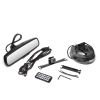



























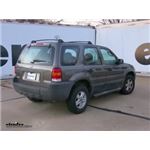
















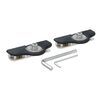









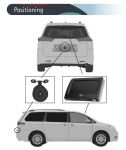
Jim G.
8/25/2020
My wife has had the backup camera for a year now and is very happy with it. She has to park in a tight parking lot for her business and it has been very helpful seeing what is behind her. She is now backing into the driveway with the unit, making it easier to load and unload her car. Thanks again